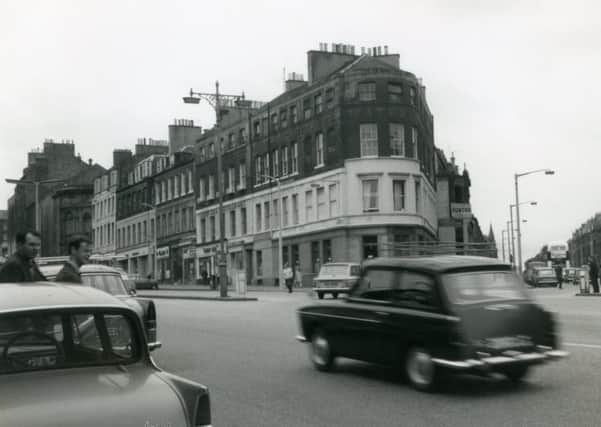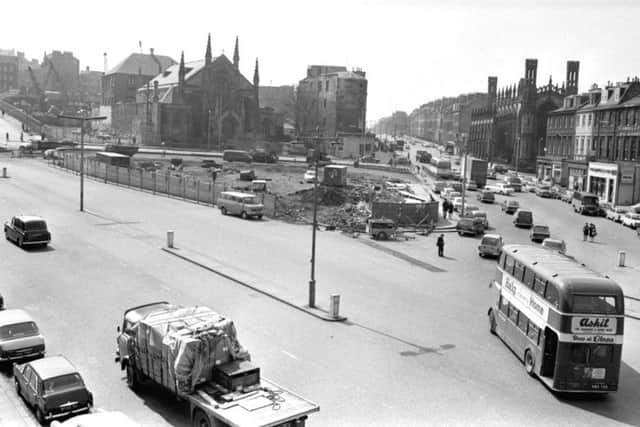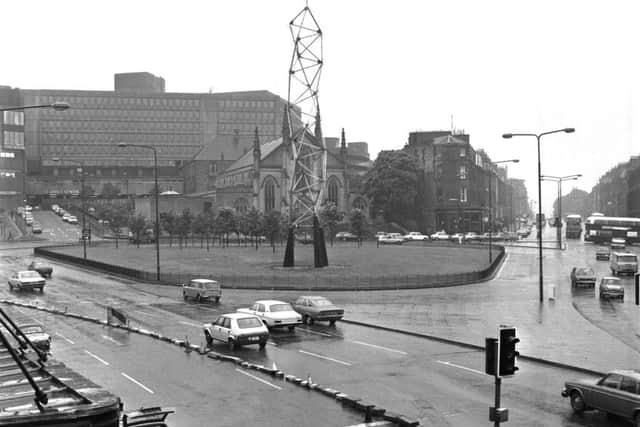Lost Edinburgh: The strange case of Picardy Place


But apply enough patience and reason, and you’ll usually succeed in completing most of the puzzle.
Picardy Place has witnessed seismic changes over the past 50 years. In fact, it’s barely recognisable.
Advertisement
Hide AdAdvertisement
Hide AdThere’s a pub on the corner of York Place called the Conan Doyle, and a statue of Sherlock Holmes on Picardy Place itself. These are clues, dear Watson, and it doesn’t take sleuth-like deduction skills to join the dots.


The author Arthur Conan Doyle was born directly opposite the statue of his best-known creation. Not on a roundabout, of course, but in a house belonging to an island block known as the Picardy Triangle.
Not surprisingly for a triangle, it consisted of three streets: Picardy Place; Union Place; and Broughton Street (north end). The whole lot was pulled down in 1969/70.
Yes, that’s right; we razed the birthplace of a literary legend. The exterior of No.11 Picardy Place even had its own plaque to explain the Conan Doyle connection.
The history of the Picardy district goes much deeper than this, of course. Its name was coined in the early 18th century, when the area became home to a group of skilled weavers from the Picardie region of northeast France, close to the Franco-Belgian border. The weavers built themselves a little commune of thirteen houses where now stands Picardy Place. They named it ‘Little Picardy’.


During Conan Doyle’s time, the French commune was long gone, replaced by chiseled Georgian townhouses with a mish-mash of three-to-four-storey sandstone tenements located opposite. Our writer was brought up in the latter.
Our lead images show the triangle in its last days. By then the buildings were looking pretty worn and tired – mainly because the decision to flatten them had already been made years before.
Advertisement
Hide AdAdvertisement
Hide AdBusinesses which folk fondly recall include the original outlets for Bandparts record store and the Deep Sea fish restaurant on Union Place. Following the demolition, both establishments migrated north. As an aside, it’s worth mentioning the presence of the old Theatre Royal on Broughton Street, a derelict shell since suffering a devastating fire years before. It stood directly adjacent St Mary’s RC Cathedral. There was a dolls’ hospital located opposite the church, which many readers may also recall.
But let’s not get too misty-eyed. This district also had a seedy reputation. It was over-endowed with pubs and the Imperial Hotel at Greenside was said to be frequented by thugs, sailors and ladies of the night. Yet I still don’t think demolition was the answer, and I truly feel for the hundreds of families who were ripped from their communities.


The Picardy Triangle, like much of Greenside, Leith Street, and the old St James Quarter, was gone by 1971. A couple of years later, the patch of land was furnished with a much-maligned 80ft tall public monument, the Kinetic Sculpture, a kind of scaffold structure comprised of fluorescent tubes, which were supposed to light up and change colour according to wind speed/direction. They rarely did anything at all, however, and the sculpture was uprooted in 1983 after just ten years.
Since then, the Picardy Triangle has morphed into what the Americans call a ‘traffic circle’. It’s a pretty shabby-looking traffic circle these days, too. Amazingly, there have been talks in recent years about reinstating a building there.
Swings and roundabouts, as they say.